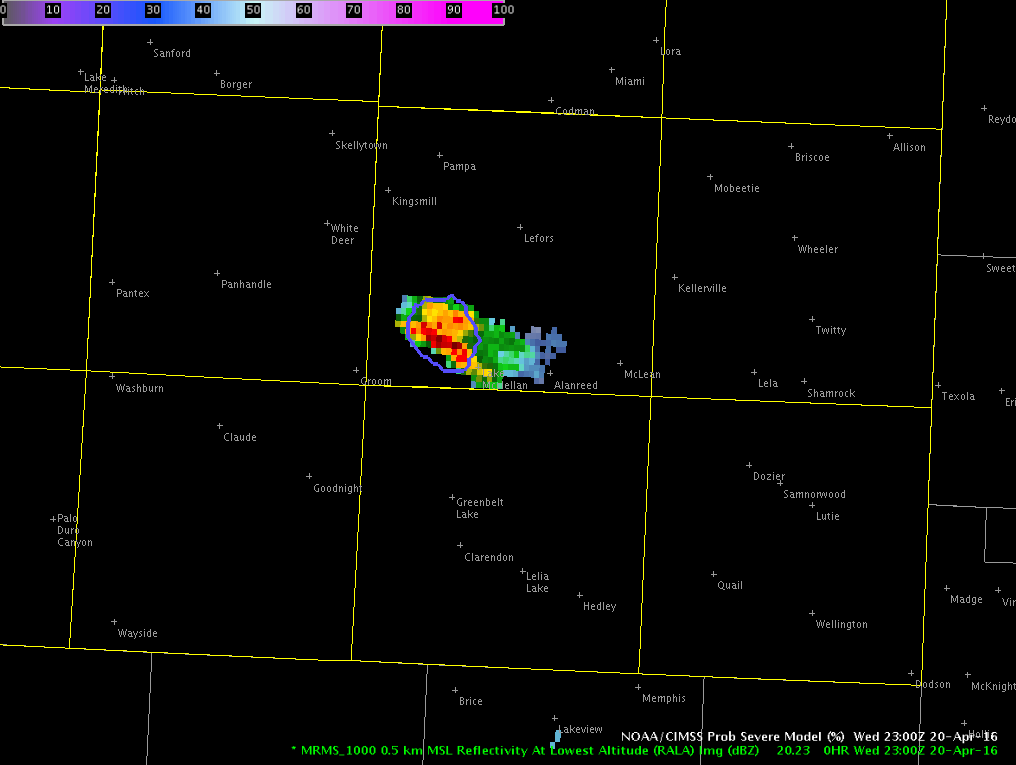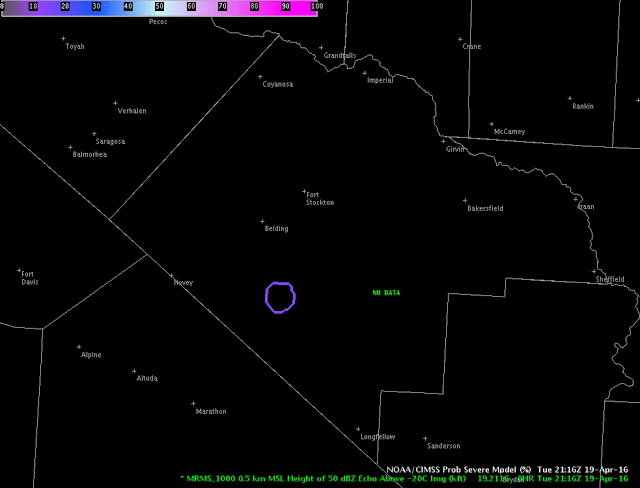Looking at the use of prob severe in providing lead time. At 23:36z a report of ping pong ball size hail.
Analysis of prob severe and lightning jump 20 minutes before at 23:16z , shows the probSvr displaying 91% chance of severe, 46kts shear, MU cape 947, Mesh 1.07″, Growth rate strong: glaciation: strong, flash rate 28/min and 1 signa jump.
20 minutes later at 23:36z: 90% chance of severe, 49 kts shear, Mu cape 1157, Mesh 1.93″, Growth rate:strong, Glaciation: strong, 0 signa. ( however, jump did stay at 1 during 20 min duration.)
One report of ping pong ball size hail at that point.
Prob severe may be a good factor in issuing an early warning for a severe storm.
-thunder













